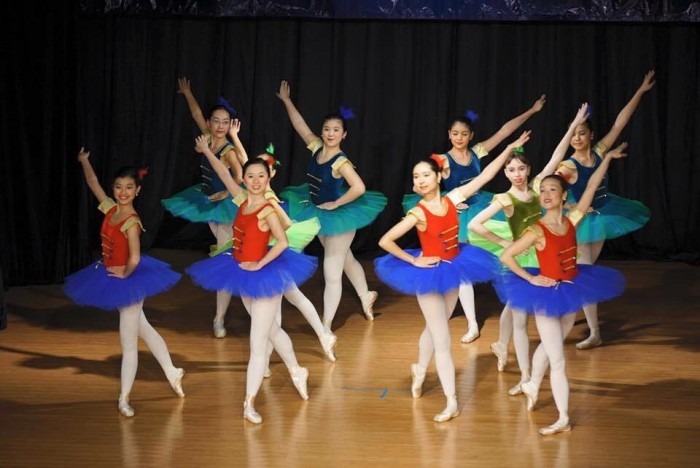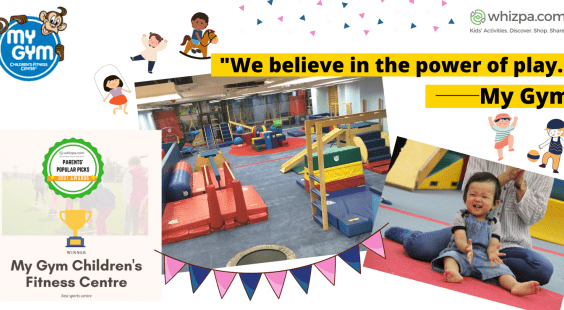
Busting Ballet Myths! Insights from experienced ballet teacher Lynne Charleston from Lynne Ballet School
The poise and confidence manifested by the ballet dancers are inspirational. Ballet dancing benefits children in numerous ways, and therefore it remains the top choice of extracurricular activities among parents and children.
Although the popularity of ballet has generally garnered an appeal and appreciation for the dance art, myths and misconceptions follow, particularly on ballet injuries and other side effects.
Whizpa is lucky to have Lynne Charleston, an experienced ballet dancer, the owner and the teacher of Lynne Ballet school, to clarify some misconceptions about ballet learning for us, hoping to offer an assurance to parents and children who aspire to become a ballet dancer.
Is stretching painful?
Achieving great flexibility is the holy grail for ballet dancers. For that reason, ballet dancers train hard to achieve better flexibility by stretching conscientiously. Some parents express concerns that stretching can be a painful process for their children.
Lynne comments that the discomfort of stretching remains minimal. Lynne stressed the importance to abide by safe dance practices. A good ballet teacher should understand the limits of their students. They also have the responsibility to teach their students to stretch in accordance with their ability, and should in no way exceed their endurable levels.
Does injury happen to ballet dancers all the time?
Since ballet is a dance art with high demands for movements, some parents concern that learning ballet will put their children at injury risk.
Lynne comments that the risk of injury of leisure ballet learning has been minimal, given that she has never observed a single injury since the founding of her ballet school. There are two crucial best practices that have been used to keep the risk of injury in ballet to a minimal: a) a rigorous regime in fitness training alongside with ballet training and b) only train within limits.
Taking Lynne Ballet School as an example, Lynne has incorporated a comprehensive fitness regimen into her ballet curriculum. She periodically organizes pilates-based “Ballet Fit” classes, aiming to provide a holistic fitness training to her students. Pilates can help ballet dancers training up core strength that improves movement stability and avoids injury. Parents may choose ballet schools with similar offerings to further minimize unlikely injury.
Lynne further comments that injuries from ballet training, if at all, are usually repetitive stress injuries, caused by overtraining and not observing one’s limits. Lynne gave parents a tip that it is crucial to choose a teacher that is dedicated to each of his/her students. It is also helpful if a teacher is expected to become the primary teacher for a sustainable time, so the teacher can understand thoroughly the limits of the students and closely follow the training a student receives is congruent to his/her limits.
Does practising ballet produce strong calves?
Ballet dancers performing en pointe practices are often thought to be prone to having bulky calves, which deters potential learners who wish to have slender legs. Will ballet dancing leads to strong calves?
Lynne comments that as long as the teacher correctly instructs students to use the correct groups of muscles, ballet dancing will not lead to bulkiness of any particular muscle.
Lynne further adds that it is essential for students to stretch after ballet classes. Not only can appropriate stretching relaxes the muscle after exercising, it helps elongates them. Therefore it is important for ballet teachers to teach students the appropriate stretching skills.
Is three years old the right age for children to start ballet?
Parents and kids generally wish for a good head starts in their leisure pursuit. Some parents may wish to cultivate the potential in their children as soon as possible, that they will encourage their children to pick up a hobby they enjoy at a young age. In addition, since five years old is the minimum age of acquiring a Pre-Primary certification in Dance of The Royal Academy Of Dance, parents typically wish to plan dance classes for their children two years earlier before they can acquire the certification, that gives rise to the idea that children must learn ballet latest by the age of three. Is learning ballet at three years old ideal?
Lynne is a strict observer of healthy dance practices. One major principle of ballet learning is the class should be age-appropriate. With regard to this principle, children at age 3 will not be able to perform too many dance moves, since their muscles are still developing. Lynne comments that the focus of junior classes for 3 year-olds is to nurture an awareness of movements and musicality, to cultivate and observe basic discipline, and to help children familiarise with listening to basic instructions. While these skills are very beneficial to children’s personal development and effective ballet learning in later stages, starting ballet after the age of 3 does not limit a child’s later potential in ballet learning. Therefore, it is never too late to join after the age of 3 given there are ample of opportunities to catch up, but starting ballet early is helpful for later ballet training and personal development.
Is Ballet a feminine dance? Is ballet suitable for boys?
Pink tutus are every young girl’s dream. The typical picture of ballerinas wearing graceful and feminine costumes has constituted a stereotype that ballet is inherently a feminine dance.
Lynne has pointed out that in her long ballet career, she has realized that the essence that epitomizes ballet are hard work, confidence and discipline, which are not traits exclusive to girls. The dancers may manifest ballet in various ways - while there is the typical type of ballet, there are also jazz ballet and contemporary ballet. It is only up to a dancer’s discretion to decide his/her dance style.
Since ballet dancing is not inherently a feminine dance and is not exclusive to girls, Lynne further comments that boys can fare just as well as girls. The stronger physique of boys enables them to handle more demanding movements.
Lynne adds that there is a new wave of movement attempting to make ballet mainstream for boys in the UK. While in Hong Kong, ballet is still not considered a preferred dance for boys, we can hope for a change, so boys can also enjoy the same benefit from ballet training.
About Lynne Ballet School
Lynne Ballet School was established 18 years ago by Lynne Charleston, who has insisted teaching all students herself along her career in ballet education. Lynne Ballet School is known for its close teacher-student connections. Besides providing quality ballet education, Lynne Ballet School is also dedicated to achieving a holistic personal development through ballet training.
Share you review on Lynne Ballet School at https://whizpa.com/listings/lynne-ballet-school








